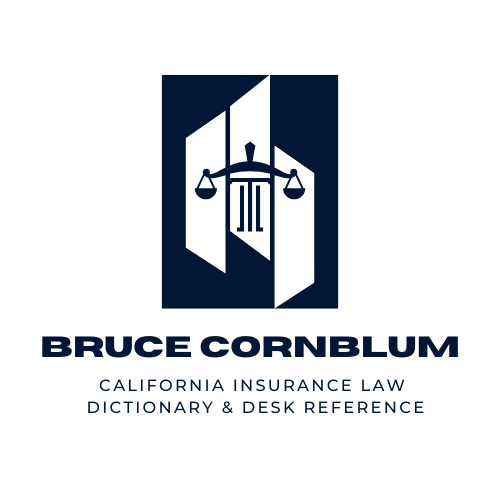The standard elements of a claim for breach of contract are:
1. the contract containing the contract terms;
2. plaintiff’s performance or excuse for nonperformance;
3. defendant’s breach, and;
4. damage to Plaintiff therefrom.[Abdelhamid v. Fire Insurance Exchange (2010) 182 Cal.App.4th 990, 999, 106 Cal.Rptr.3d 26]
Insured’s duties under the contract in a first party property policy
A first party property policy lists a number of ‘conditions’ for coverage, including a number of the insured’s ‘duties after loss’. An important provision is that: ‘In the case of a loss to which the insurance may apply, you shall see that the following duties are performed: … (a) submit to us, within 60 days after we request, the signed, sworn statement of loss which sets forth, to the best of your knowledge and belief: … (b) specifications of any damaged property and detailed estimates for repair of the damage …’. A failure of the insured to cooperate in producing such information is a failure of performance. [Abdelhamid v. Fire Insurance Exchange (2010) 182 Cal.App.4th 990, 999, 106 Cal.Rptr.3d 26] See § D83.04 DUTIES OF INSURED [FIRST PARTY LOSS] [§ D83.04:1 In general]
Breach of contract; disability policies
Under California law, a claim for breach of contract (disability policy) includes four elements:
1. that a contract exists between the parties;
2. that the plaintiff performed his contractual duties or was excused from non-performance;
ILLUSTRATION: If the policy requires that the insured be under the regular care of a physician to obtain benefits, plaintiff must be in compliance with this provision or be excused from this requirement. [Bravo v. United States Life Insurance Co. (2010 E.D. Cal.) 701 F.Supp.2d 1145, 1157-1158]
3. that the defendant breached those contractual duties, and;
ILLUSTRATION: If the insured is unable to perform functions of her former job, defendant/insurer has an obligation to pay benefits and termination is a breach. [Bravo v. United States Life Insurance Co. (2010 E.D. Cal.) 701 F.Supp.2d 1145, 1155]
4. plaintiff’s damages were a result of the breach. [Bravo v. United States Life Insurance Co. (2010, E. D. Cal.) 701 F.Supp.2d 1145, 1155] See § D50 DISABILITY BENEFITS.
Bad faith instructions
Where a plaintiff/insured is requesting the jury find ‘bad faith’, the instructions must contain elements that have to be proven to establish bad faith. Such instructions include the requirement that the insurer breached the implied covenant of good faith and fair dealing. This breach of the implied covenant of good faith and fair dealing necessarily includes a finding by the jury that the insured has been damaged by the insurer’s conduct. [Amerigraphics Inc. v. Mercury Cas. Co. (2010) 182 Cal.App.4th 1538, 1558, 107 Cal.Rptr.3d 307]
In closing argument plaintiff’s counsel may argue the same evidence that supported breach of contract and bad faith
During closing argument the attorney for plaintiff-insured can argue that the same evidence supporting a finding of breach of contract also supports a finding of bad faith. [Amerigraphics Inc. v. Mercury Cas. Co. (2010) 182 Cal.App.4th 1538, 1558, 107 Cal.Rptr.3d 307]
* BOLD references are to the 3-volume treatise entitled CALIFORNIA INSURANCE LAW DICTIONARY AND DESK REFERENCE (4500 pages, 2011 Ed.), which can be purchased from West Publishing at 1-800-328-4880 1-800-328-4880.
1-800-328-4880.
